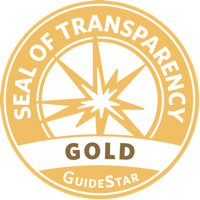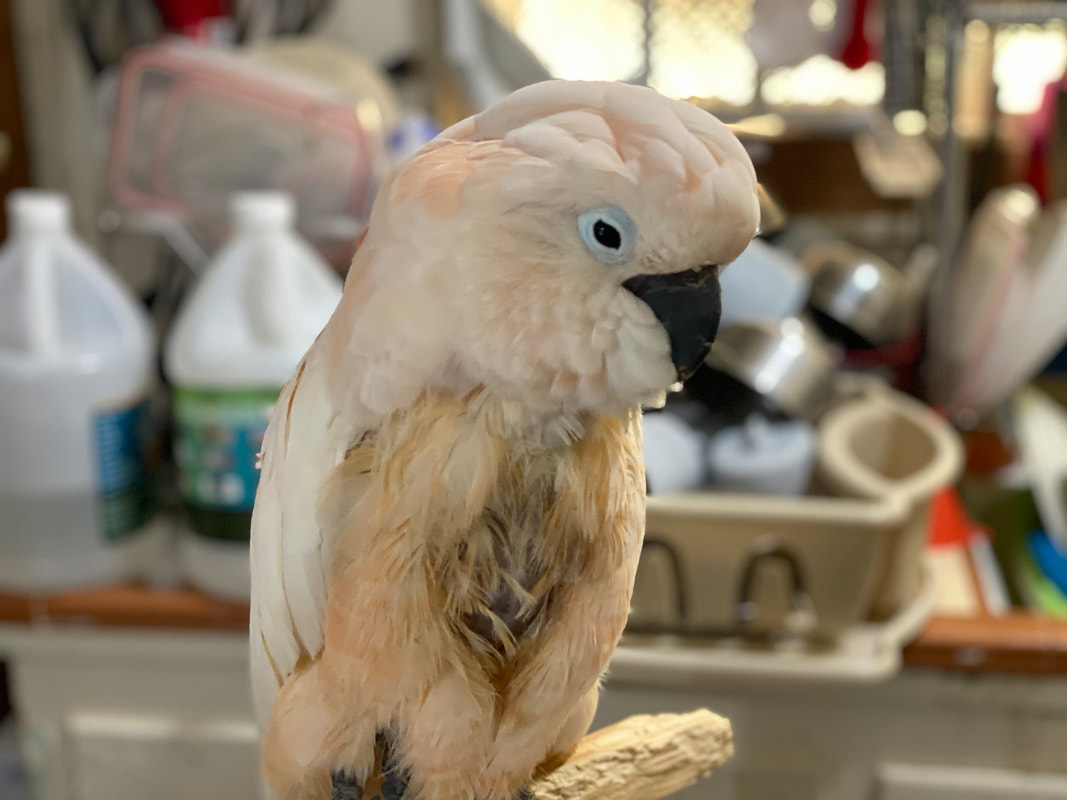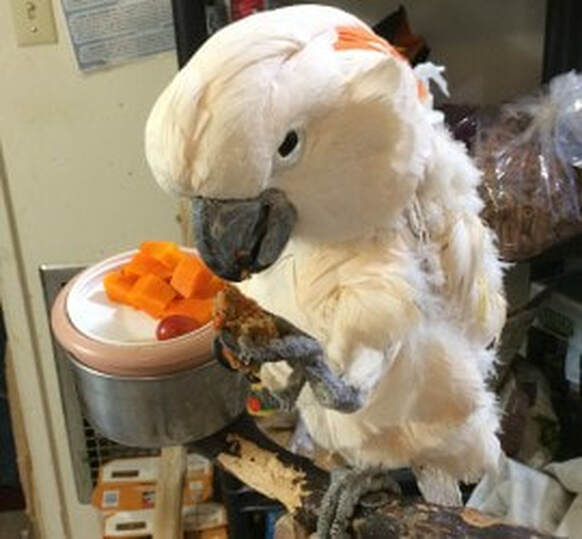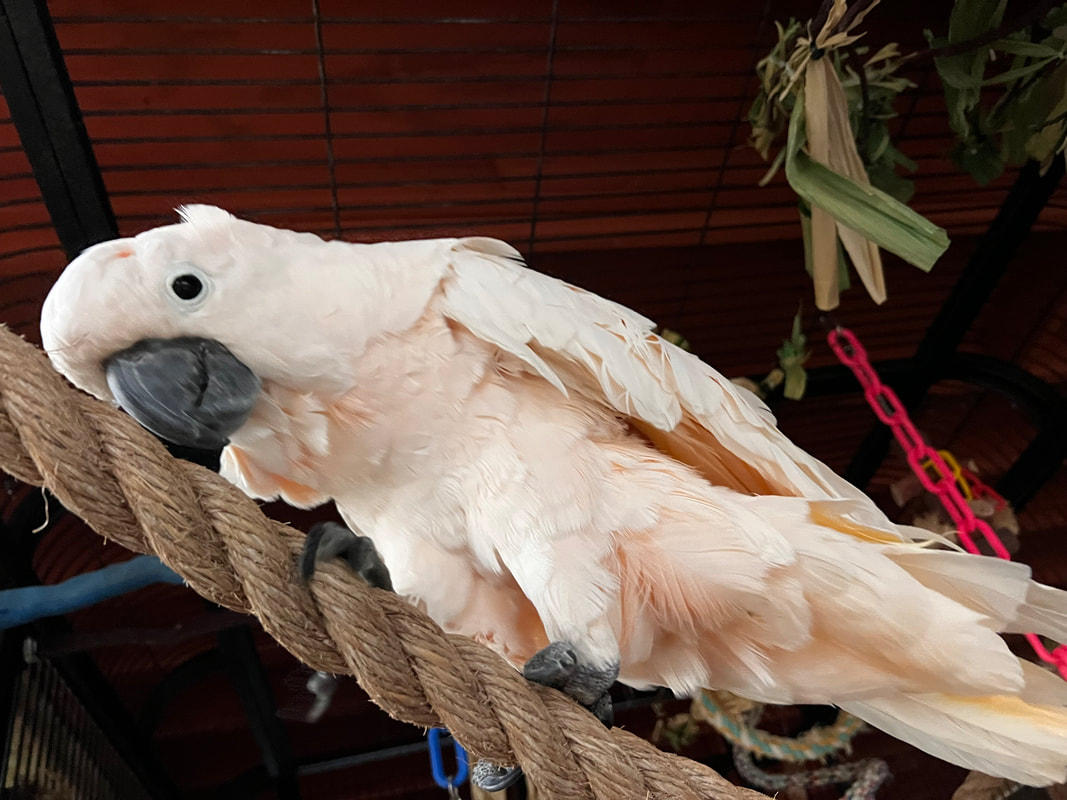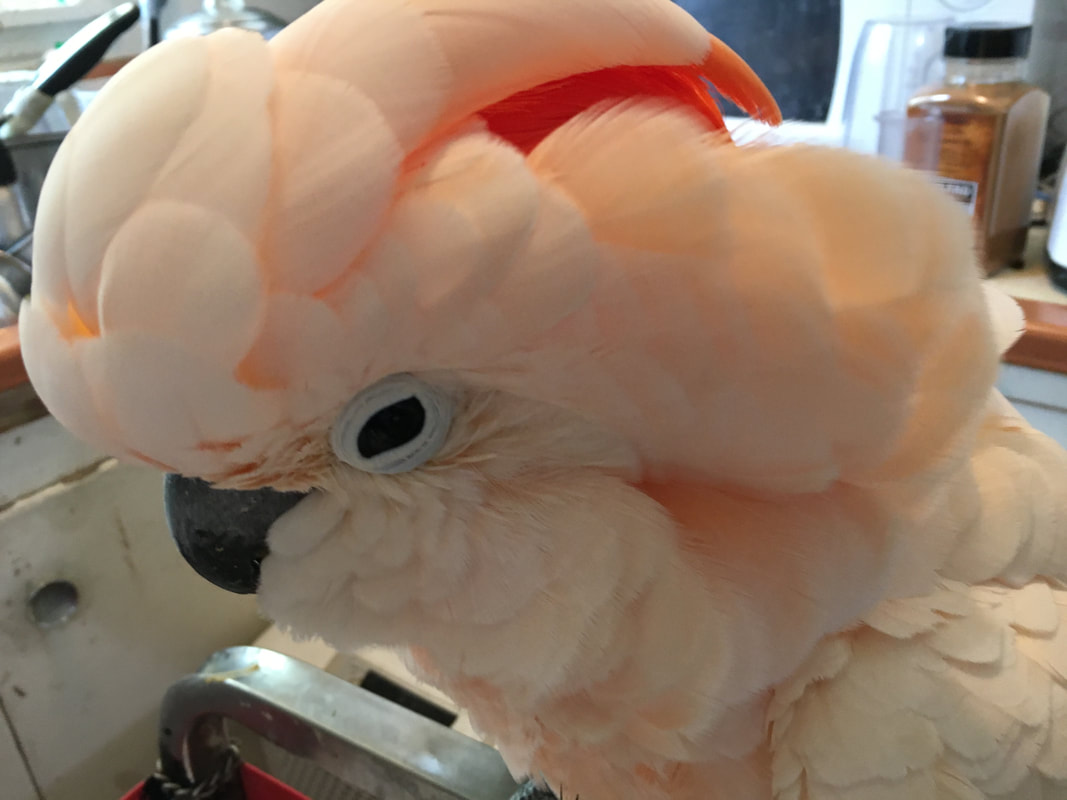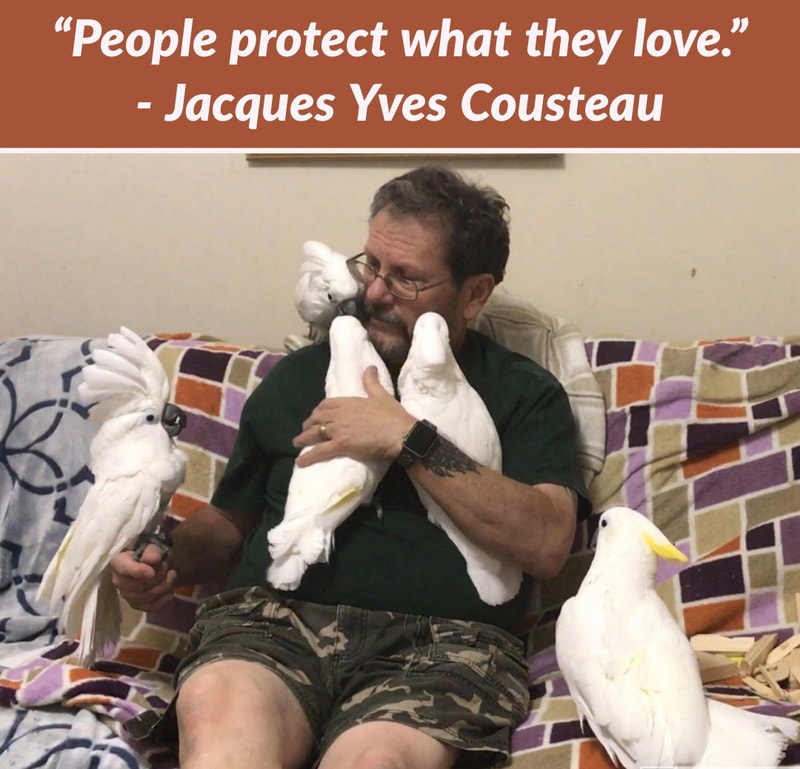We NEED many things to keep our Sanctuary alive! Donations are most appreciated.
Our latest new permanent resident: KAYKAY
KayKay is a self-mutilator whose Daddy just passed away.
Jazmin
This is Jazmin the day that she came to us. Jaz is a mutilator. She suffers from one of the disorders caused by being bred in captivity. It's a disorder that we are well-equipped to deal with. With the knowledge gained from Jeffrey Jenkins DVM of The Avian and Exotic Animal Hospital of San Diego, Dr. Susan Friedman, PhD, and Dr. Jenifer Zeligs of Animal Training and Research International, I have have the tools needed to heal this feathered beauty. I must also give special thanks to the professor who made it all possible by mentoring me in college. He taught me how to educate myself, to alway strive to be a force for good in the world, and to never stop learning. Finally, I must honor Fran Cannon of Cannon training who taught me how to overcome my impulsiveness and how to fund a nonprofit.
Within a month that she was here, she stopped harming herself. She actually stopped this behavior within two days with Haldol and environmental enrichment. The hardest thing about healing her was getting sleep. She required round-the-clock care. She was heavily medicated at first but now is on a low dose of medicine, active and interested in the world, and demanding her wishes be met! How wonderful!
Within a month that she was here, she stopped harming herself. She actually stopped this behavior within two days with Haldol and environmental enrichment. The hardest thing about healing her was getting sleep. She required round-the-clock care. She was heavily medicated at first but now is on a low dose of medicine, active and interested in the world, and demanding her wishes be met! How wonderful!
Sugar
BabaluBabalu was re-homed eight times in the first 11 years of his life. Being re-homed is difficult for any cockatoo but being re-homed that many times shatters their worldview. ...
|
Peaches - We miss you, precious little girl!Peaches had 6 Vertebrae fused in her neck. When she came to us she also had feather destructive behavior. With much effort we worked with her and created a space where she ...
|
A bridge over the river of suffering
A message from our executive director
When working with rescue parrots you see many things: suffering, neurosis and psychosis. Often I see eyes darkened by futility. They have given up. They have reached the point where they would rather die than continue living. Life has become a living hell where the one that they wanted to love has turned into a demon. Because of that demon they become raving, screaming creatures that would do anything to make the pain stop. There is nowhere to turn; they live in a nightmare world.
This is how most people come to us. As rescuers, we naturally take the first paragraph to mean the suffering of birds. No, I am not talking about a parrot being relinquished. I am describing many of the people who turn over their birds to us. Often they are close to mental breakdown. They never dreamt that the sweet-looking, cuddly cockatoo they brought home would turn them into awful, spiteful people who throw things at cages and yell “stop it” at the top of their voices. Often they have abandoned the bird to its cage because they are afraid of another bite. Many times they cover the cage to stop the incessant screaming. Most of them would feel contempt for someone who mistreated a dog. In truth, I think most of them feel contempt for themselves. They hate what they have become.
[Continue reading…]
When working with rescue parrots you see many things: suffering, neurosis and psychosis. Often I see eyes darkened by futility. They have given up. They have reached the point where they would rather die than continue living. Life has become a living hell where the one that they wanted to love has turned into a demon. Because of that demon they become raving, screaming creatures that would do anything to make the pain stop. There is nowhere to turn; they live in a nightmare world.
This is how most people come to us. As rescuers, we naturally take the first paragraph to mean the suffering of birds. No, I am not talking about a parrot being relinquished. I am describing many of the people who turn over their birds to us. Often they are close to mental breakdown. They never dreamt that the sweet-looking, cuddly cockatoo they brought home would turn them into awful, spiteful people who throw things at cages and yell “stop it” at the top of their voices. Often they have abandoned the bird to its cage because they are afraid of another bite. Many times they cover the cage to stop the incessant screaming. Most of them would feel contempt for someone who mistreated a dog. In truth, I think most of them feel contempt for themselves. They hate what they have become.
[Continue reading…]

